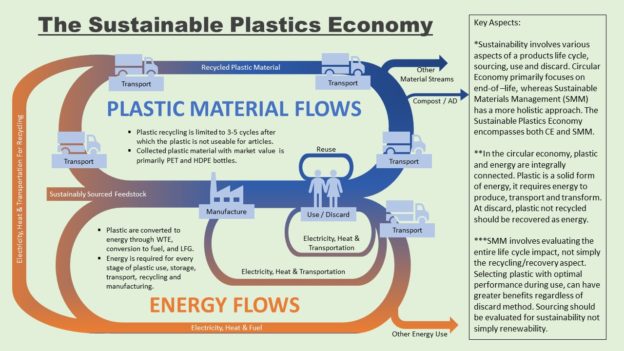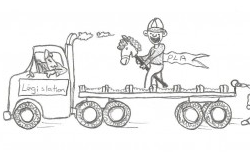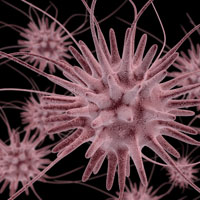This is a great article. Companies should be going with the best environmental packaging out there, not just what consumers believe is the best environmental packaging because they have suffered from greenwashing or a lack of access to the facts. How amazing would it be to have a bottle made from renewable resources & with the ENSO additive. A renewable, biodegradable & recyclable bottle, that would be amazing.

Consumer preferences driving PepsiCo sustainability efforts
PURCHASE, N.Y. (Aug. 11, 12:40 p.m. ET) — For a brand owner like PepsiCo, sustainable packaging doesn’t just mean making decisions on a complex set of resource, energy and environmental issues. It also means that you have to understand and determine whether consumers will view what you do as sustainable.
“Everything needs to be in sync with the brand identity, and you have to ask yourself what is the right message so the consumer understands that what you are doing is sustainable,” said Denise Lefebvre, vice president of global packaging for food and beverage giant PepsiCo. “There already is confusion among the public about sustainability, so all our messages have to be clear, consistent and in sync.”
Lefebvre, who was director of advanced research for beverage packaging for the Purchase, N.Y., soft-drink giant until a recent promotion, also said that when it comes to sustainable packaging, much of what brand owners focus on is driven by “consumer desires and consumer thinking.”
“Consumers are looking for technologies and innovations where it is readily evident to them what to do with that product and how it benefits them and the environment,” Lefebvre said in a recent interview. “The benefit has to be clear to them and right in their sweet spot. Our messages give us an opportunity to simplify things for consumers.”
With that in mind, the company has focused on producing increasingly lightweight PET bottles, developing technology to make PET bottles from plant-based resources and agricultural and food waste, and putting Dream Machine recycling bins and kiosks into place in cities to increase the number of bottles and cans that are recycled, she said.
“When consumers see a bottle that is fully recyclable and ultra-lightweight, it helps them in terms of making their purchase,” Lefebvre said. “The consumer understands source reduction and the use of less material. It is tangible and they can understand that. So if we can create technologies to push that faster, that would be ideal.”
Similarly, consumer perceptions are one of the driving reasons why PepsiCo is working, in partnership with others, to make a PET bottle completely from plant-based materials, including switch grass, pine bark and corn husks.
“If I tell [consumers], it’s 100 percent renewable PET, they understand it and they get it because they want things straightforward,” Lefebvre said.
Since the firm announced in March that it had developed a 100 percent renewable bottle, it has received positive consumer feedback, she said — although that bottle won’t eat go into pilot production until sometime in 2012, and even then, in limited quantities of 100,000-500,000 bottles.
“Consumers like it because you have eliminated fossil-based products [and] they believe that pulling oil out of the ground” is not the route to use anymore, Lefebvre said.
PepsiCo is also working to make its planned renewable PET bottle from organic waste from its food businesses, including orange and potato peels, oat hulls and other agricultural byproducts.
“Consumers have made it clear that they want us to use non-food resources, or food or agricultural waste [for bioresins] because it doesn’t detriment the environment and it doesn’t take away from food supplies,” she said.
Although many of PepsiCo’s sustainability package initiatives are driven by consumer perceptions, the firm realizes it can’t do things that are not sustainable just because consumers perceive them to be, she said. “Consumers would love an oxo-biodegradable bottle,” Lefebvre said “But right now, the technologies out there would do more harm than good.
“So to deliver something that would be more detrimental to the environment … It would be wrong and it would be greenwashing.”
Similarly, PepsiCo is not using polylactic bioresin for bottles because she said the material does not have the necessary barrier properties and is problematic in the PET recycling stream.
During a presentation at the Bioplastek conference in New York in late June, Lefebvre said PepsiCo’s objective is to create “performance with a purpose” in its packaging.
“Our objective is to make a 100 percent renewable, sustainable, non-fossil-fuel-based PET bottle in a closed-loop system using agriculture waste,” she said. “We want performance identical to what we have now: a product that is fully recyclable and a product that significantly reduces the carbon footprint.”
A number of companies now make non-petroleum-based ethylene glycol — which is 30 percent of the formulation of PET. And roughly a half-dozen firm say that they have demonstrated in a lab that they can make paraxylene, the building block for terephthalic acid, which constitutes the rest of PET, or plant-based terephthalic acid.
PepsiCo’s main competitor, Coca-Cola Co., has been making its PlantBottle from conventional terephthalic acid and renewable ethylene glycol since December 2009. H.J. Heinz Co. also began using the Coca-Cola PlantBottle for its 20-ounce ketchup containers in July.
Heinz expects to sell 120 million PlantBottle ketchup bottles in 2011; Coca-Cola expects this year to package 5 billion beverages globally in 15 countries in the PlantBottle compared to 2.5 billion last year.
PepsiCo has not discussed technology details for making the renewable terephthalic acid needed for a PET bottle manufactured 100 percent from renewable resources.
“We can buy and source the renewable ethylene glycol from any number of sources,” Lefebvre said. “That has been around for awhile. The key is the T piece [terephthalic acid]. That is critical in driving a renewable PET bottle to a mass scale.”
PepsiCo plans to model several different types of chemistry in its pilot -cale project to determine their efficiency to make renewable terephthalic acid. “There are a lot of emerging technologies that we will be evaluating, and they all have their pros and cons,” she said. “We’re very open to looking at them all and would be comfortable using several of them,” she said.
“We don’t make PET. We’re not going to. So we need the quality to be right.”
Lefebvre said she expects PepsiCo to announce soon on its sourcing strategies for renewable PET bottles. None of those strategies, she said, mean the firm will reduce its efforts to boost recycling of its plastic bottles or aluminum cans.
Since it embarked on its Dream Machine recycling initiative in April 2010, PepsiCo has placed 2,600 Dream Machines bins and reverse-vending kiosks in more than 30 states — at supermarkets, on city streets and other public venues.
The recycling bins are similar to trash cans, but they’re painted Pepsi blue with a recycling message on them. The computerized kiosks give reward points for each bottle or can recycled, which consumers can redeem online at greenopolis.com. — a partner in the program along with Waste Management subsidiary WM GreenOps LLC.
PepsiCo has also developed a recycling initiative for schools, called Dream Machine Recycle Rally, which rewards schools with points for each non-alcoholic plastic bottle or aluminum can students bring to school for recycling.
“It is a self-supportive strategy,” Lefebvre said of the initiatives. “As the program proliferates, it reaffirms to the consumer that recycling is important, and that recycling is just as good as renewables.” The Dream Machines also help the firm bring up recycling rates and get the material it needs to incorporate recycled content in its products, she said.
Just last week, PepsiCo announced that in August it will market the first plastic soft drink bottle to be made from 100 recycled PET in North America. The bottle, 7UP EcoGreen, will be used for diet and regular 7UP sold in Canada. It is expected to reduce the amount of virgin PET used for that product by 6 million pounds a year.
“We want to use more recycled PET” in all plastic bottles, Lefebvre said. “It is a matter of obtaining the right quality and getting the material — which is in short supply. “
To augment PepsiCo’s supply of recycled PET, the firm last year agreed to buy the majority of its bottle-grade PET pellet and flake from the new CarbonLITE plant in Riverside, Calif., which is scheduled to launch by Sept. 30 with nameplate annual capacity of 100 million pounds.








 “Only we humans make waste that Nature can’t digest,” says Moore.
“Only we humans make waste that Nature can’t digest,” says Moore. According to the
According to the 
